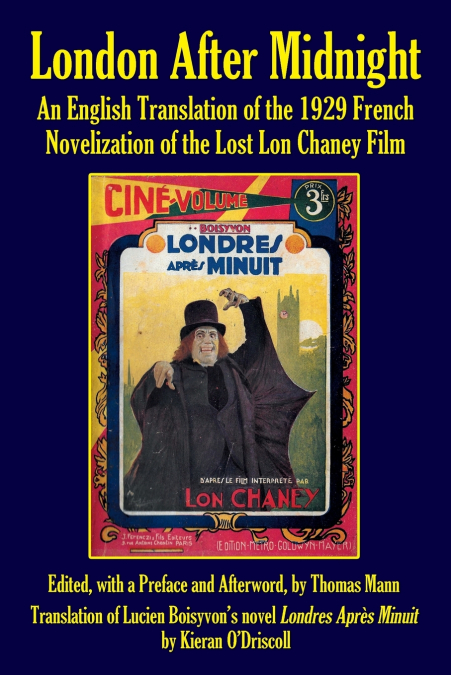
Thomas Mann
The last known copy of London After Midnight, the lost 1927 Lon Chaney film, was destroyed in an MGM studio fire in 1967. Since then researchers have been combing film archives throughout the world in hopes of finding a surviving copy, but without success. Different ‘reconstructions’ of the film—one in book format, the other as a motion picture—have continued to generate interest in recent years, both relying primarily on the many surviving still photos, arranged in sequence according to the film’s surviving cutting continuity (with the motion picture camera’s panning and zooming across them). Thomas Mann, who discovered the long-lost 1928 Boy’s Cinema literary version of the film (published by BearManor Media), now offers a new and comparably important discovery: an English translation of an equally “lost” French novelization of the story dating from 1929, written by someone who actually saw the film. In a detailed comparison of this literary take on the story to the movie itself (as represented by its cutting continuity), Mann sheds considerable new light on the range of incoherent plot problems known to have bedeviled the film, and on how they were creatively dealt with by a contemporary story teller. Thomas Mann is a retired librarian and independent scholar living in Washington, DC. He is the author of The Oxford Guide to Library Research (Oxford University Press, 2015). Lucien Boisyvon (1886-1967), author of Londres Après Minuit, was a prolific writer, newspaper critic, and popular novelist. Kieran O’Driscoll holds a doctorate in French-English Literary Translation from Dublin City University. Among other works he has translated two plays by Jules Verne in BearManor Media’s Palik Series of the North American Jules Verne Society.